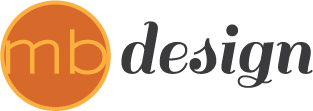This is the third blog in the Hotel Marketing 101 series. Check out the first and second posts of this series and be sure to check back every Tuesday for more Hotel Marketing tips. In the next Hotel Marketing blog, we'll discuss online promotions.
Hotel Marketing 101: The Power of Promotions
For many hotel owners, running a promotion seems like giving away inventory. Considering the frightening state of the economy, some hoteliers feel like they have no choice. Others still play the price match game with their competitors, making it incredibly difficult to manage revenue effectively. Here's a few suggestions on profitable promotion techniques to help you move some inventory without giving it away.
There are 6 necessary elements to a promotional campaign:
- Define your objectives. Of course, the primary objective is to make more money but clearly defining the reason for the promotion, such as sales dropping by 20% last quarter, is essential for your success. Outline the value of the promotion, be it holiday-specific discounts, complimentary add-ons, group discounts, etc.
- Know your target audience. While it is true that blanket promotions can work, they can also do a lot of harm in regard to your hotel's perceived value. Design promotions to groups who travel frequently to your destination, be it business travelers, sports fans, avid bird watchers. You get the idea.
- Specify your timeline. A simple but necessary step is outlining the start and end date of the promotion.
- Analyze your margin after the discount. Without a proper pricing analysis, your promotion could do more harm than good. Resist picking a number out of thin air and do some basic math. Evaluate your margins on each room type and subtract the discount from it. If the leftover margin is not sustainable you'll have to be more creative.
- Getting your promotion to the target audience. There are a variety of ways to run promotions. One of the simplest is through social media. Online Travel Agents (OTAs) are another great promo channel (be sure to set those up with your Central Reservations Service provider or PMS interface so that it is visible in those channels). Most importantly, promote deals on your website and within your booking engine!
- Define what equals success to you. Success looks different to every property so define what works to meet your specific needs. For example, sales have increased by X% this month, leading to X% increase in revenue because of this specific promotion or add-on.
- Ok, I lied, there's 7. Keep going. If this promotion doesn't work, try something new. If it does, keep going!
Some Outside-of-the-box Promotion Ideas
So you don't want to do a steep price discount and I can't say I blame you, but that shouldn't stop you from finding creative ways to make more money. While potential guests come in all shapes and sizes, they all have one thing in common: they want to know they got a good deal.
- In every scenario, the promotion has to back out to your desired ADR. One way to achieve this is through a price mark-up of 20% that you then discount by the same amount. You sell the room at your desired rate and have increased the perceived value to the customer.
- Participate in an OTA promotion. Sites like Priceline, Travelocity, Hotwire, etc are a great place to run last minute deals while also improving your visibility on these sites. For InnLink customers, we just ran a Priceline promo that was quite successful for our customers. Important note on OTA promotions: your promotion discount is on top of the percentage you pay to OTAs per reservation.
- Tacking on an extra night during the off season or on Sundays when business is normally slower.
- No fees package that includes free wifi, parking, hotel shuttle, etc.
- Reach out to your local Convention and Visitors Bureau to see if they have any partnership opportunities. Perhaps they are willing to market your property on the destination's website.
